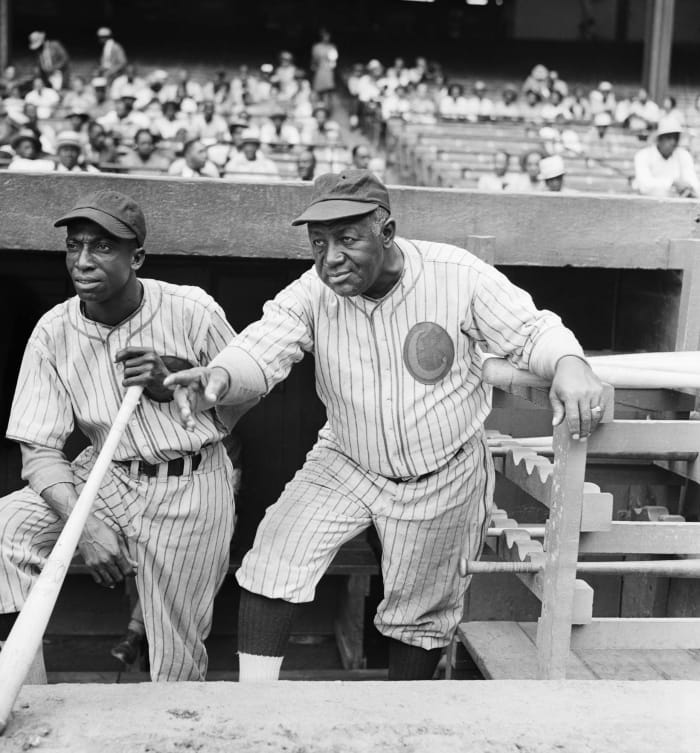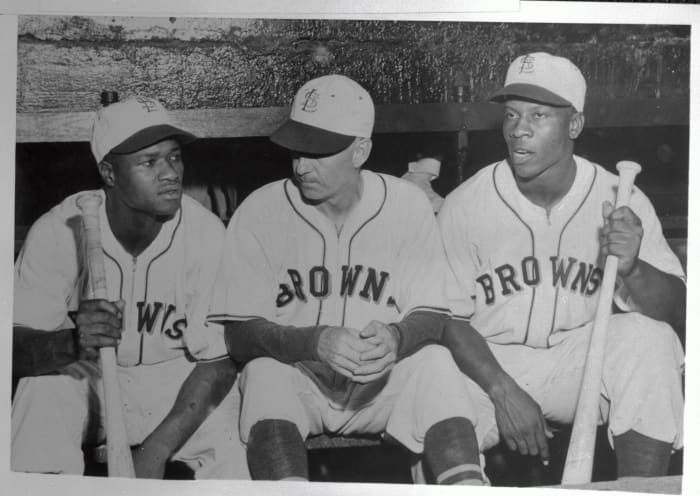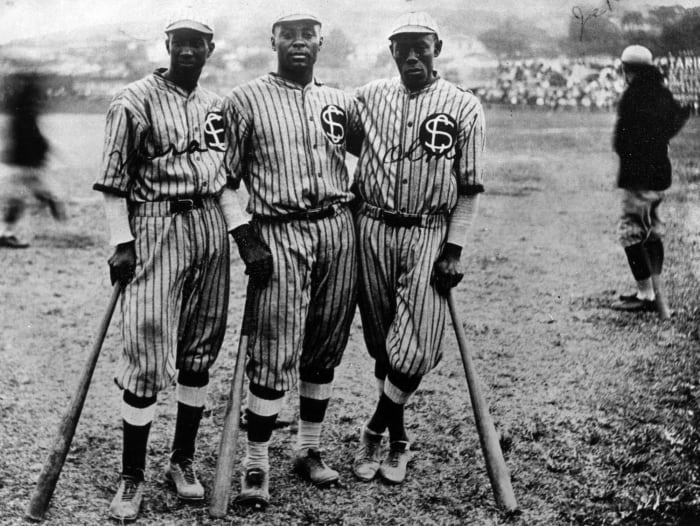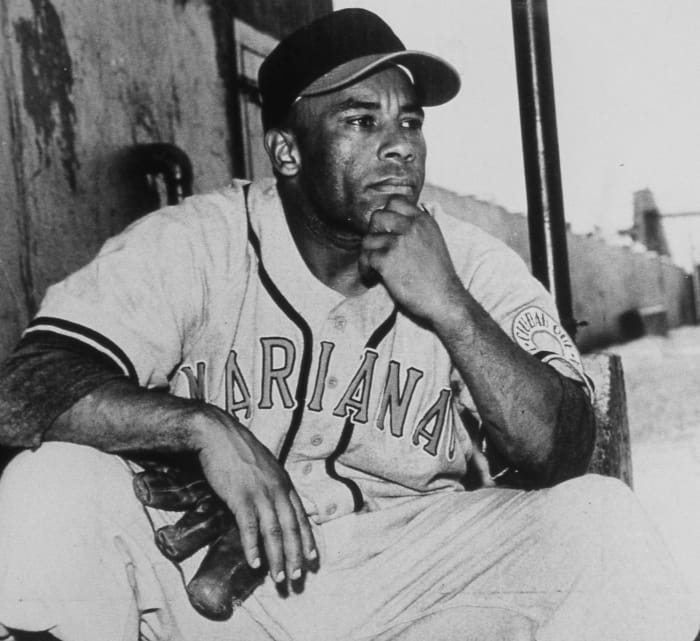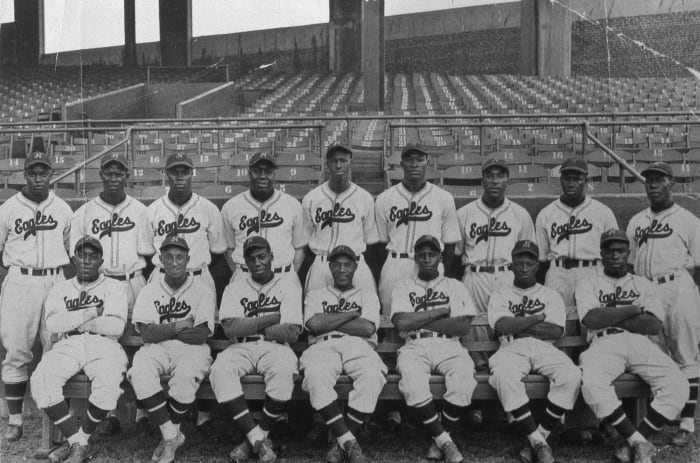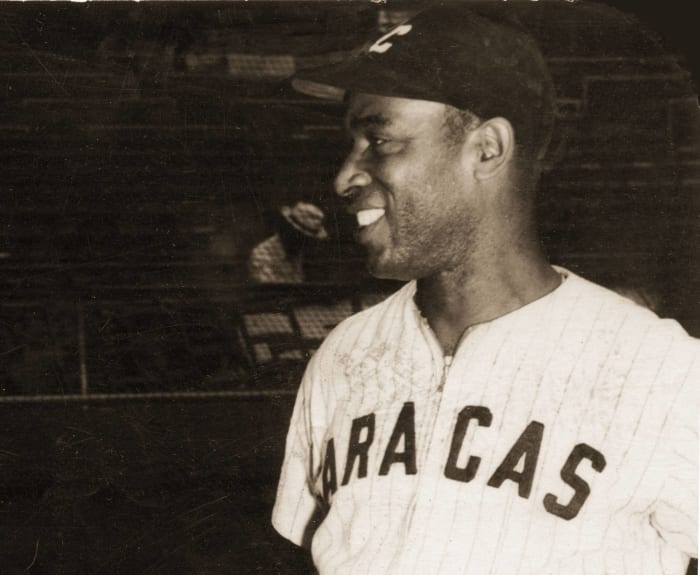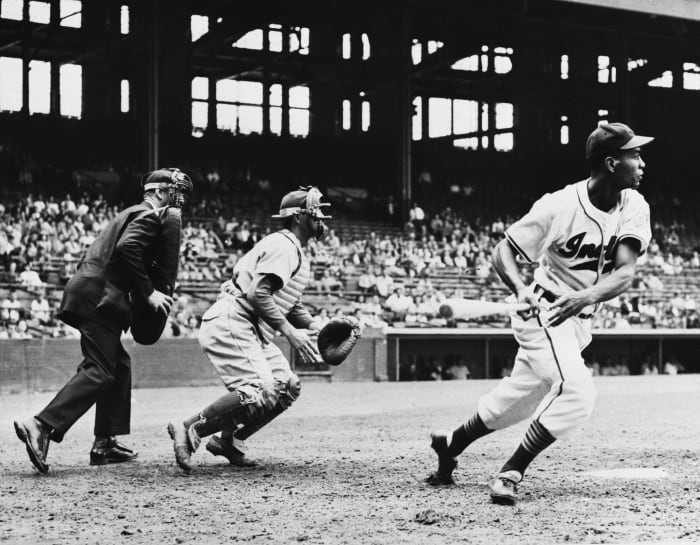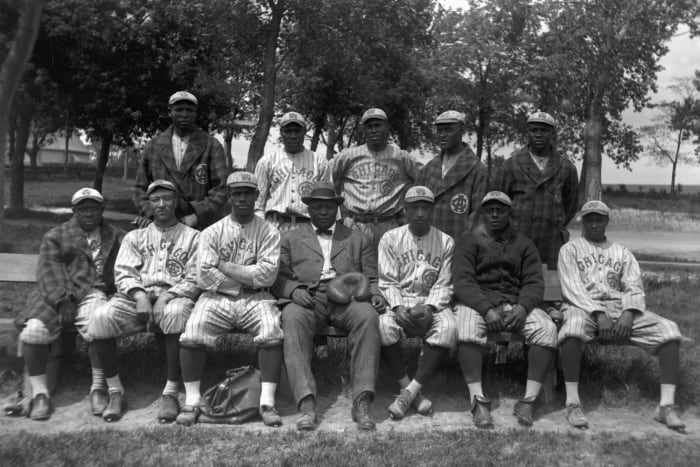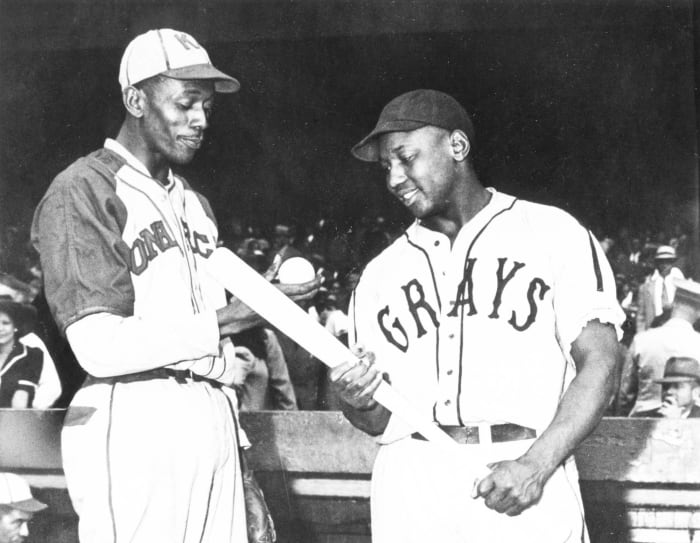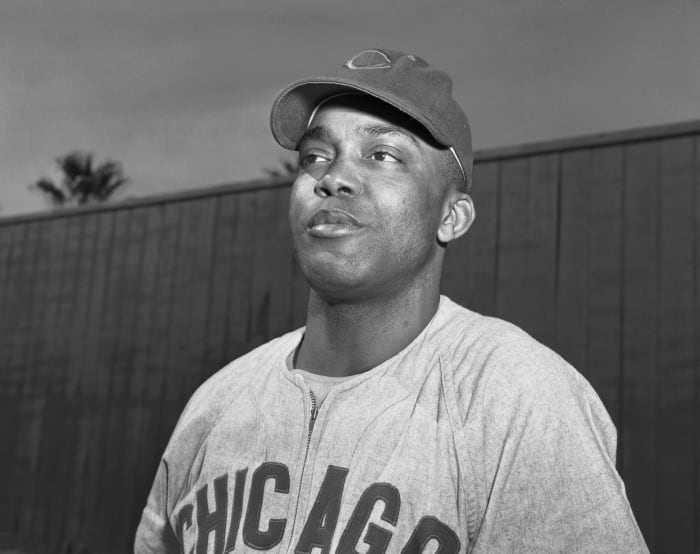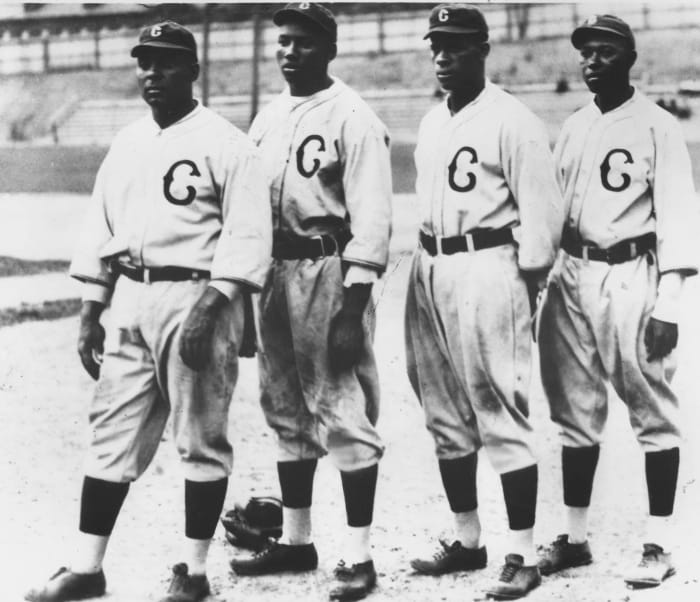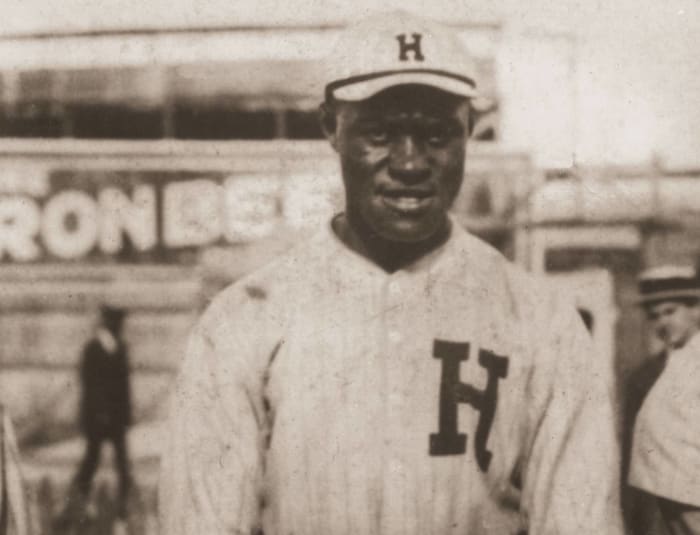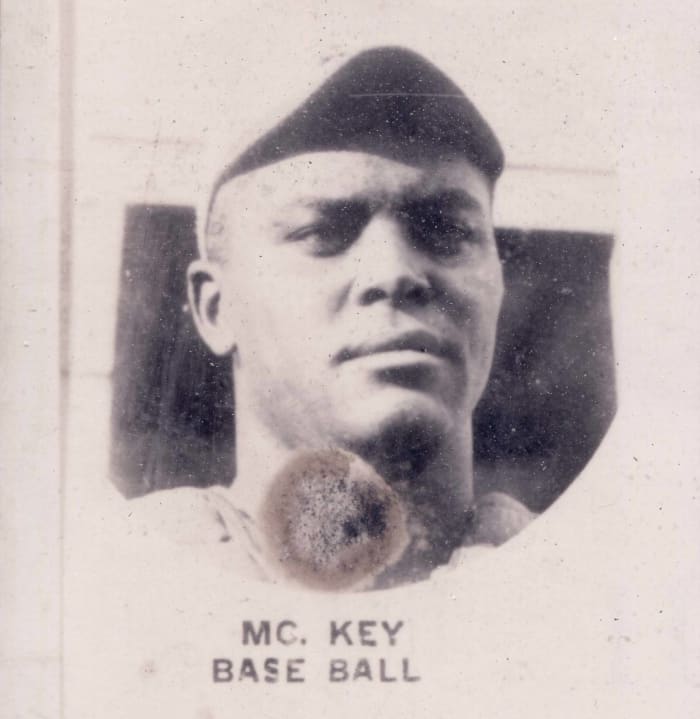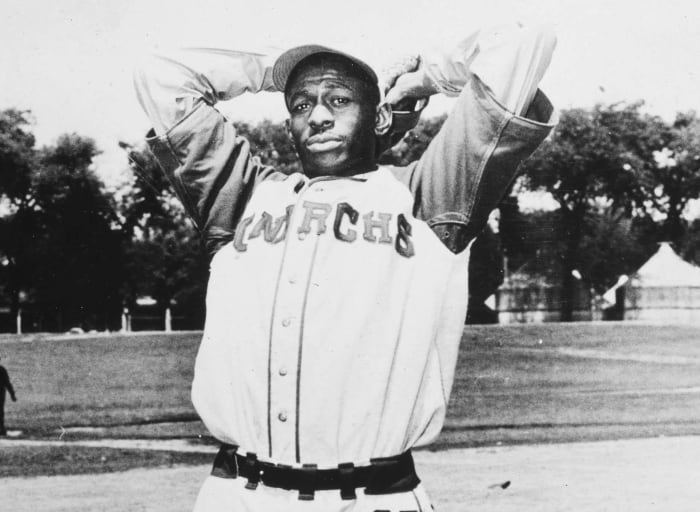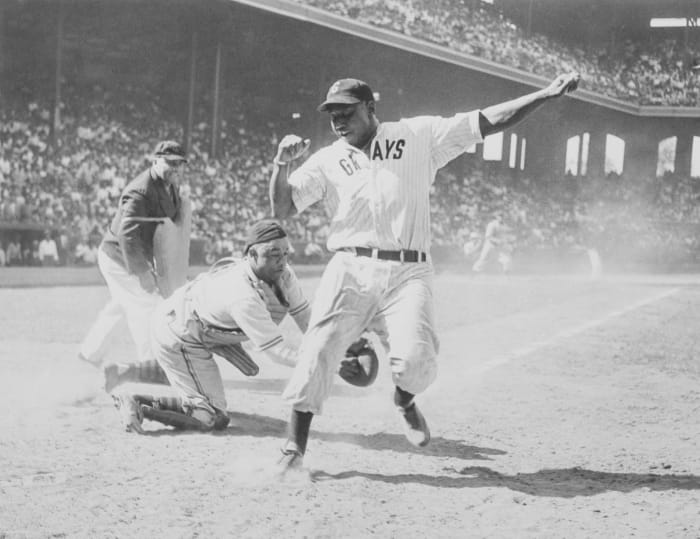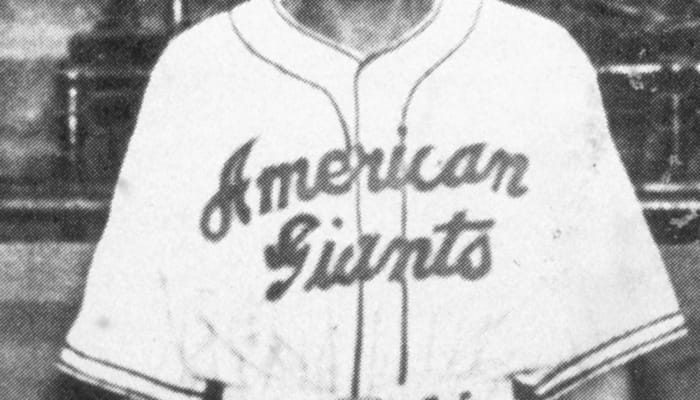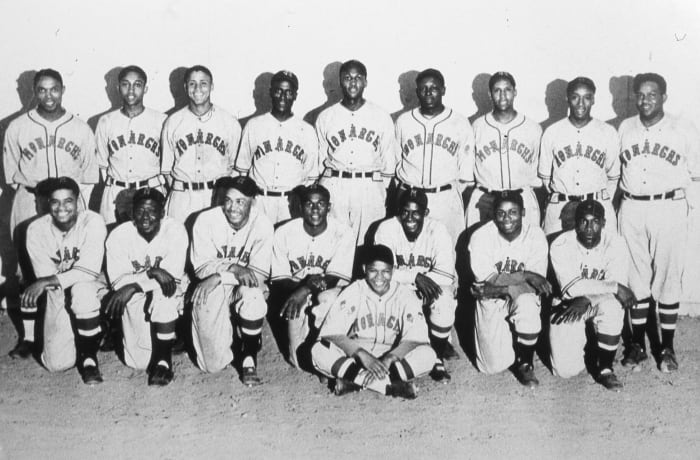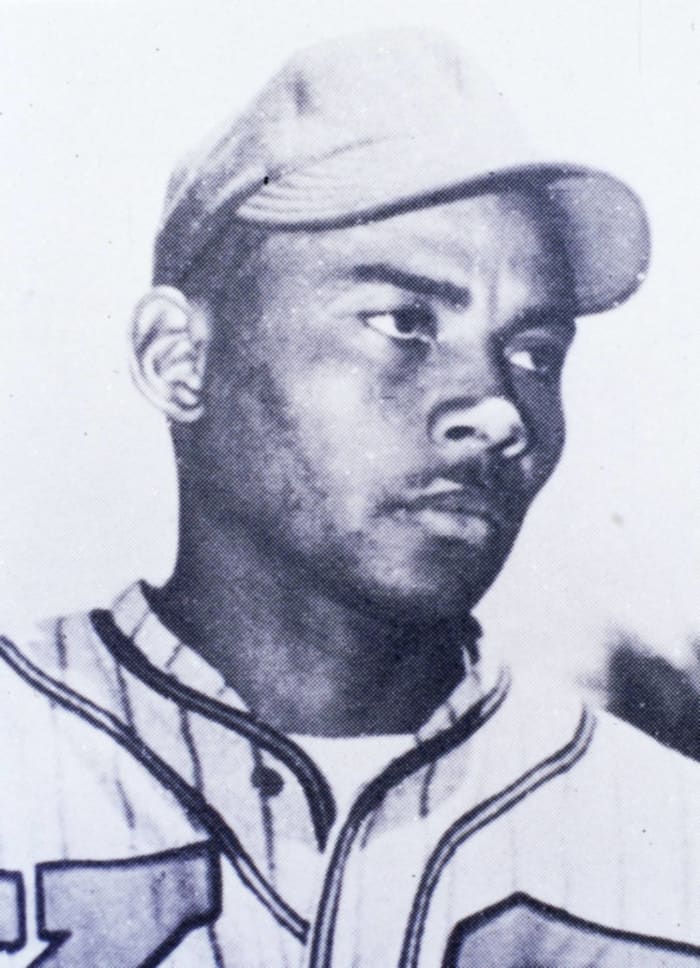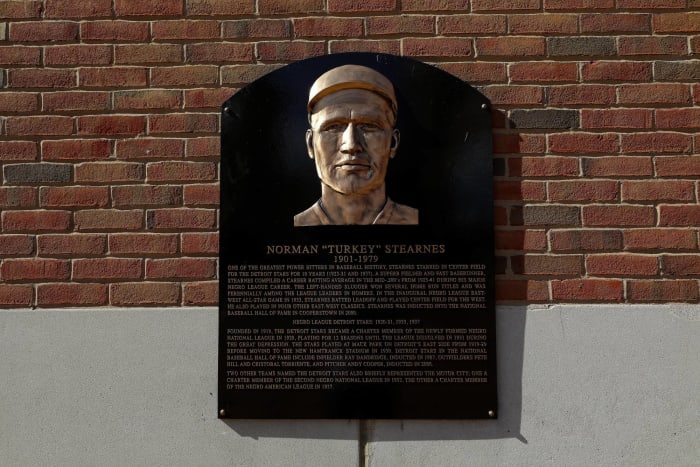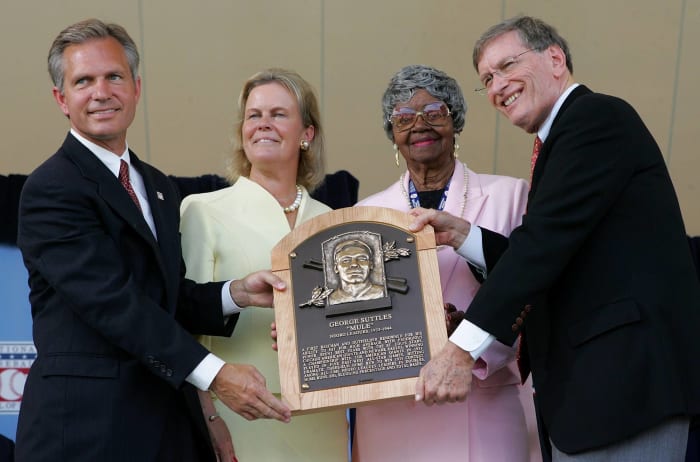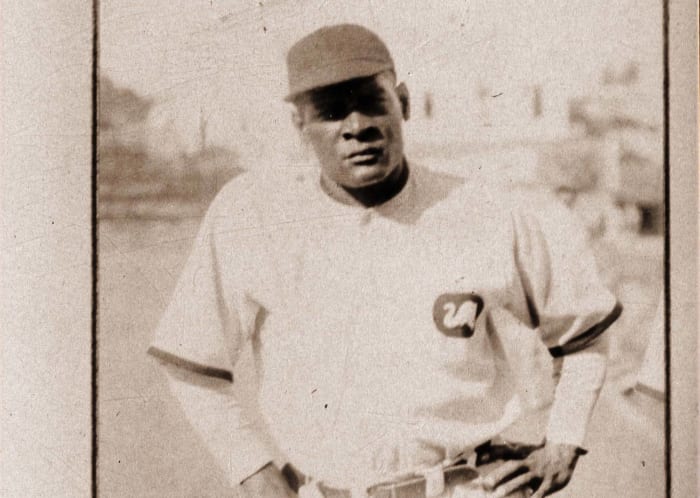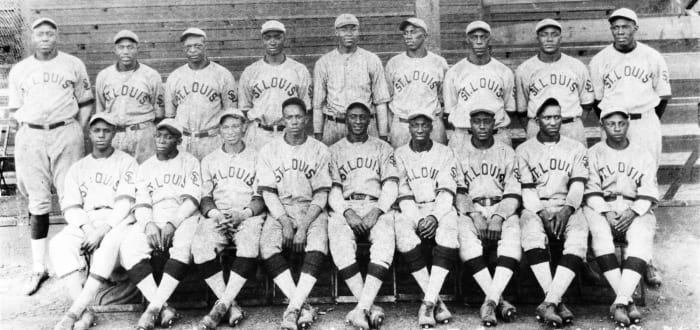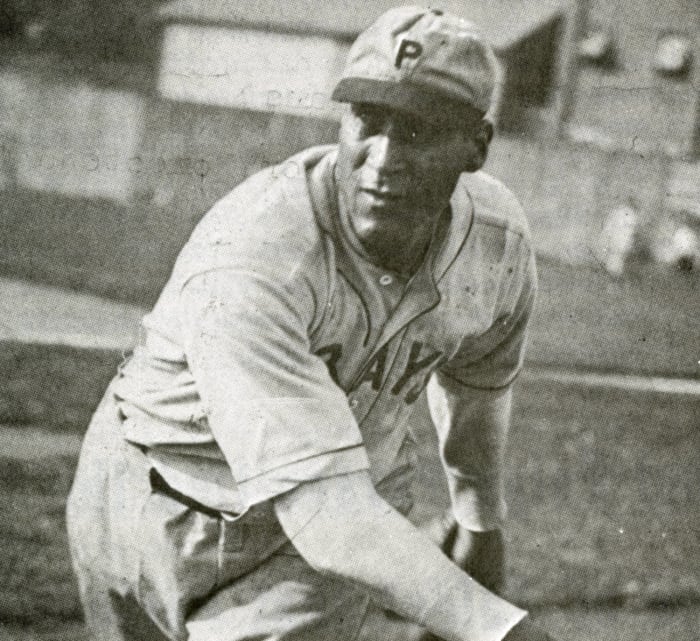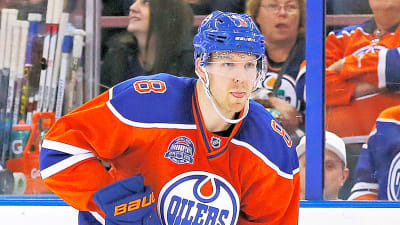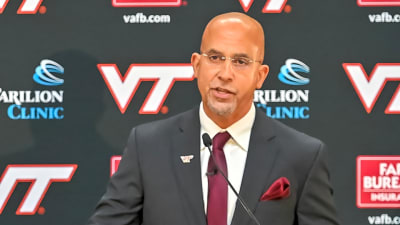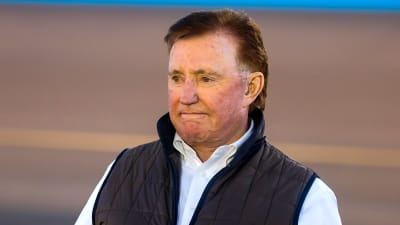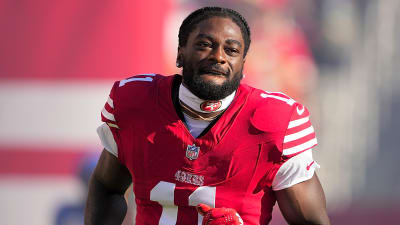The story of the various baseball organizations that collectively formed the Negro Leagues over the first half of the 20th century is vital to telling the story of the game to this day.
This list highlights the legacies of the greatest black players during the segregated era of professional baseball. Ranging from the Negro Leagues to Cuban and Mexican pro leagues and the barnstorming circuit that pitted black and white stars of the day against each other, this is a look at the players who carried the most acclaim from the era. While statistics can be inconsistent, the recollection of the talent lives on.
Here is a look at 25 of the greatest performers in the distinguished (and varied) history of Negro League baseball.
1 of 25
Cool Papa Bell, OF
Bettmann/Getty Images
James Thomas Bell was a star center fielder for the St. Louis Stars, Pittsburgh Crawfords and Homestead Grays, among others. Regarded as the greatest speedster not only of the Negro Leagues but also in baseball history, Bell’s speed made him a tremendous threat. His prowess on the base paths resembled the style of an Ichiro in the contemporary game, but to a greater degree. He was an eight-time All-Star, a .337 career hitter in the Negro Leagues and was elected to the Baseball Hall of Fame in 1974.
2 of 25
Willard Brown, OF
Bettmann/Getty Images
One of the most prodigious power hitters in the history of black baseball, Brown was a force at the heart of Kansas City Monarchs lineup. He became a legend in both the United States and Puerto Rico, where he was also a top performer for years. He was an aggressive presence at the plate, with raw power that was said to be on par with Josh Gibson. Brown eventually joined the St. Louis Browns and became the first African-American to homer in the American League in 1947.
3 of 25
Oscar Charleston, OF/1B
Transcendental Graphics/Getty Images
Nicknamed “Charlie,” Charleston was the greatest all-around everyday talent the Negro Leagues ever saw. An athletic center fielder with a bat that had power to all fields, his best MLB comparisons stand as Willie Mays, Ken Griffey Jr. or Andruw Jones. He swung a tremendous left-handed bat, with his career batting average estimated in the range of .350, and he was a 40-homer, 40-steals type of performer. He was elected to the Baseball Hall of Fame in 1976.
4 of 25
Ray Dandridge, 3B/2B
Transcendental Graphics/Getty Images
Dandridge was a unique player in that he played the hot corner — where he excelled defensively — but did so at a size that was more typical of a middle infielder (5-foot-7). Think an Ozzie Smith/Omar Vizquel glove that played out of position due to the presence of Willie Wells alongside him for many years with the Newark Eagles. He was a tremendous contact hitter and stayed productive well into his 30s when he was signed by the New York Giants, although he was never promoted past the Triple-A level.
Transcendental Graphics/Getty Images
Day was a tremendous talent and a jack of all trades who was able to excel at many positions around the field. However, he was at his best on the mound, where he was an overpowering right-handed pitcher and one of the hardest throwing pitchers in the game. He possessed a unique, no-windup delivery that seemingly put the ball on top of the batter in a hurry. Day spent much of his career with the Newark Eagles, and many of his contemporaries claimed he was superior to Satchel Paige on the mound.
6 of 25
Martin Dihigo, UT
Transcendental Graphics/Getty Images
A native Cuban and legend of both his homeland and the Negro League ranks, Dihigo was one of the most versatile stars of the game. Playing across the outfield, at second base and even featuring as pitcher, Dihigo twice led the Negro Leagues in home runs. He also once defeated Satchel Paige on the mound. From 1923-1936, he spent stints with the Cuban Stars, Homestead Grays, Hilldale Giants and New York Cubans. He also was a star in the Mexican Leagues, where he posted an 18-2 record with a 0.90 ERA in 1938 while also leading the league with a .387 batting average. Dihigo was everything that Shohei Ohtani is expected to be.
Bettmann/Getty Images
While much of Doby’s legacy is remembered for following Jackie Robinson in integrating MLB by becoming the first African-American American Leaguer, Doby was Robinson's superior in the Negro League ranks. He spent five seasons with the Newark Eagles and made his debut at the age of 17. Although Doby’s career was interrupted by a stint in the Navy during World War II, he spent the time in service starring for the all-black baseball squad before returning to the Eagles, where he hit .360 in 1946.
Diamond Images/Getty Images
Half brother of fellow pitcher and legendary manager and executive Rube Foster, the younger Foster brother is considered the best southpaw in Negro League history. While he possessed great speed on his fastball, it was his complete arsenal that made him most dangerous. He starred for his brother’s powerhouse Chicago American Giants club throughout the 1920s and won three championships along the way.
Chicago History Museum/Getty Images
No man had a bigger guiding influence over the direction and enduring legacy of the Negro Leagues than Foster, who is known as the "Father of Black Baseball.” As an owner and executive of the Negro National League, he oversaw the longest-lasting single entity of the Negro League era, lasting from 1920 to 1931. Before turning his attention to the front office, Foster was the greatest pitcher of the early Negro League era. Legend has it that he once won over 50 games in a season in 1905, and even if that overwhelming feat is not completely documentable, remaining box scores from the season do credit him with a 25-3 record on the year.
Transcendental Graphics/Getty Images
It is hard to draw the line between life and legend when it comes to Gibson, who is credited by some with over 900 home runs in his career. The legend of him hitting a ball completely out of Yankee Stadium in 1930 is well-known, and while it is impossible to ever completely statistically verify Gibson’s track record, the many, many accounts of his tremendous acumen at bat make it clear he was one of the most uniquely powerful hitters ever. When asked about the Pittsburgh Crawfords and Homestead Grays star, Monte Irvin once said, “I played with Willie Mays and against Hank Aaron. They were tremendous players, but they were no Josh Gibson.” Others said that while Gibson was known as the “Black Babe Ruth,” it truly should have been that the Babe was the “White Josh Gibson.” Gibson’s lifetime batting average is counted somewhere between .351 and .384, and he was also known as a strong defensive presence.
11 of 25
Monte Irvin, OF/1B
Bettmann/Getty Images
One of the final stars of the Negro Leagues, Irvin starred for the Newark Eagles over the course of nine seasons. Although his stint in the league was interrupted by a contract dispute that saw him depart for the Mexican Professional Leagues once and World War II another time, Irvin was one of the greatest hitters the league saw. He hit over .350 in three different seasons and won MVP of the Puerto Rico Winter League before becoming an MLB All-Star. He won the 1952 World Series alongside Willie Mays with the New York Giants.
12 of 25
Judy Johnson, 3B
Clarence Gatson/Gado/Getty Images
Johnson was a star at third base for the Hilldale Club, Homestead Grays and, most famously, Pittsburgh Crawfords throughout his 16-year career. He was a defensive wiz and regarded as arguably the best pure glove at the position ever. He was a member of what is considered the most talented Negro Leagues team ever assembled, when he joined Satchel Paige, Josh Gibson, Oscar Charleston and Cool Papa Bell on the Crawfords in 1932. Johnson later became instrumental in getting Negro Leaguers inducted into the National Baseball Hall of Fame in 1970s.
13 of 25
Buck Leonard, 1B
Transcendental Graphics/Getty Images
While many consider Lou Gehrig to be the greatest first baseman of all time, Leonard was considered by many to be his superior at the position. Unlike most players in the league, Leonard played nearly his entire career with one club, the Homestead Grays, where he was a 13-time All-Star. He provided protection behind John Gibson for a number of those seasons, forming the second half of the “Thunder Twins.” In some seasons he even outhomered Gibson and often finished second behind him in the years he didn’t. Leonard ultimately turned down an MLB contract later in his career, citing that he was too old to be the player he was in his prime.
Transcendental Graphics/Getty Images
A star of the early years of the Negro Leagues, Lloyd is regarded as the best shortstop in the league’s history. So good was Lloyd that none other than Babe Ruth said he was greatest player he ever saw. Lloyd was a brilliant all-around player, as capable of putting the pressure on with his speed as with his power, which was rare for the time. When his nickname of “Black Wagner” was brought to the attention of Honus Wagner, his contemporary in MLB, Wagner said it was “an honor to be compared to him.”
15 of 25
Raleigh “Biz” Mackey, C
Transcendental Graphics/Getty Images
Mackey was the premier defensive catcher of black baseball throughout the early years of the Negro National League. He had a long career that began in 1918 and finished in 1950. Mackey’s strong arm, game-calling and skill behind the plate were unrivaled, and he served as an early mentor to future three-time National League MVP Roy Campanella.
16 of 25
Satchel Paige, P
Transcendental Graphics/Getty Images
The most renowned player and personality ever seen in black baseball, Paige’s exploits on the mound spanned over 40 years while taking on a mythical ethos along the way. Paige’s talent for showmanship helped draw massive crowds wherever he traveled, while his gifts on the mound made good on the hype that surrounded him every time he took the mound. Thus was the marriage of confidence, bravado and skill that he possessed, Paige would call in the defense from the field and still strike out the side. Underneath all of that, Paige was an extraordinarily talented power pitcher who had two distinct parts of his career. When he was young, his fastball was overwhelming enough that he used it exclusively. Then as he got older, he integrated in several off-speed pitches that he used just as effectively. Some still consider Paige the best pitcher in the history of the game.
17 of 25
Ted “Double Duty” Radcliffe, C/P
Bettmann/Getty Images
As his nickname indicates, Radcliffe was a busy man. He was a two-way star on the field and a well-traveled one off it, playing for over 30 teams during his lengthy career. On one end of a doubleheader in 1932 Negro Leagues World Series, he caught Satchel Paige in Game 1, then threw a shutout of his own as the starter of Game 2. Radcliffe made multiple All-Star appearances as both a catcher and pitcher and often changed positions throughout the season as his team needs demanded it. Later in his career, Radcliffe roomed with a young Jackie Robinson during his tenure with the Kansas City Monarchs in the mid-1940s.
18 of 25
“Cannonball" Dıck Redding, P
Transcendental Graphics/Getty Images
Standing in at over 6-foot-0 and 200 pounds, Redding was one of the most intimidating hurlers in the game during his time. His fastball was notoriously hard, earning him the “Cannonball Dıck” moniker. He was also an innovator on the mound, capable of working from multiple delivery points to make his famous fastball even tougher to deal with. Across his career, Redding was credited with 30 no-hitters and often pitched both ends of doubleheaders.
19 of 25
"Bullet Joe" Rogan, P/OF
Transcendental Graphics/Getty Images
Owner of a devastating curveball and a fastball that was at the very least on par with Satchel Paige’s, Rogan is among the best pitchers the Negro Leagues ever saw. By some accounts, it is said he won more games than any pitcher in black baseball history. The story did not stop on the mound with Rogan, as he was just as talented with a bat in his hands. His two-way talents saw him perform as both an ace hurler for the Kansas City Monarchs and the team’s cleanup hitter. Rogan led the club to a victory in the first Negro League World Series in 1924.
Transcendental Graphics/Getty Images
As the No. 2 in the Kansas City Monarchs' rotation behind Satchel Paige, Smith was an integral part of Negro Leagues history. It could be argued that he was the best reliever in the Negro Leagues. He often paired with Paige to work complete games, pitching the final five to six innings after Paige opened affairs. Smith possessed one of the best curveballs of his time, so much so that many of his opponents preferred to face the most daunting of fastballs than have to figure out the landing point of his breaking ball.
21 of 25
“Turkey” Stearnes, OF
Raymond Boyd/Getty Images
A phenomenal talent who wielded a powerful bat that was rivaled by his top-end speed, Stearnes was one of the most gifted outfielders in the history of the game. Recent studies have credited him with home run totals that rivaled (if not surpassed) those of Josh Gibson. Otherwise a quiet, low-key type, Stearnes was known for talking to his bats to motivate or chastise them into performing. His accounted for career statistics included three seasons of hitting over .400 and 176 home runs.
22 of 25
George “Mule” Suttles, OF/1B
Jim McIsaac/Getty Images
A strapping, powerful presence, Suttles was one of the elite power hitters in the history of black baseball. His home runs were monumental, often traveling over 500 feet. Suttles affirmed his presence on the barnstorming circuit and in the East-West All-Star Games, where he hit over .400 in six appearances throughout the 1930s. While spending much of his career in left field, he spent his final seasons as a first baseman with the Newark Eagles as a member of the prized “Million Dollar Infield.”
23 of 25
Cristobal Torriente, OF
Transcendental Graphics/Getty Images
A native of Cuba and star of the Cuban Leagues before making his way to America, Torriente was a phenomenal hitter capable of power to all fields. The hard-hitting, left-handed center fielder was proclaimed to be the “Babe Ruth of Cuba.” Torriente took black baseball by storm upon reaching the Negro Leagues, starring for Rube Foster’s Chicago American Giants and making them a dominant force of the mid-1920s. Torriente won two batting titles and three championships with the Giants and maintained a .331 career Negro Leagues batting average.
24 of 25
Willie Wells, SS
Transcendental Graphics/Getty Images
A dizzying collective of speed and glove work, Wells was one of the greatest defenders to ever play the game. Nicknamed “El Diablo” or “The Devil” during his time in the Mexican Leagues due to taking away anything hit in his direction, Wells reportedly produced multiple errorless seasons at the game’s toughest defensive slot. He was just as capable at the plate, possessing a power, contact and speed package that made him one of the most complete players ever. He played the keystone alongside fellow Hall of Famers Mule Suttles and Ray Dandridge in the Newark Eagles' “Million Dollar Infield.”
25 of 25
"Smokey" Joe Williams, P
Transcendental Graphics/Getty Images
Known as both “Smokey Joe” or “Cyclone Joe,” Williams was a dominant force on the mound and one of the greatest pitchers in black baseball. It is said that Williams was the hardest-throwing pitcher of his time and among the fastest ever still. In 1930, Williams struck out 27 Kansas City Monarchs over a 12-inning shutout victory. On the barnstorming circuit, he truly showed that he was beyond reproach at the time, as he bested MLB stars Walter Johnson, Grover Cleveland Alexander and Chief Bender, among others. In the most telling and unlikely endorsement of his abilities, none other than Ty Cobb once said that Williams would be a “sure 30-game winner” in MLB.

 +
+
